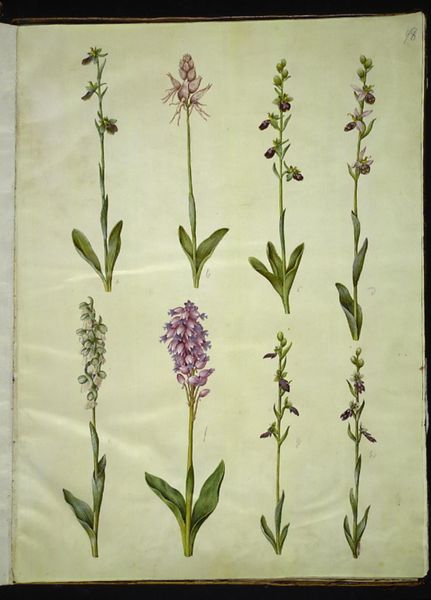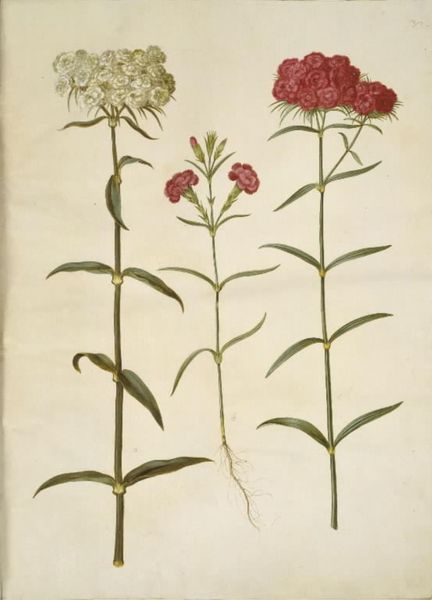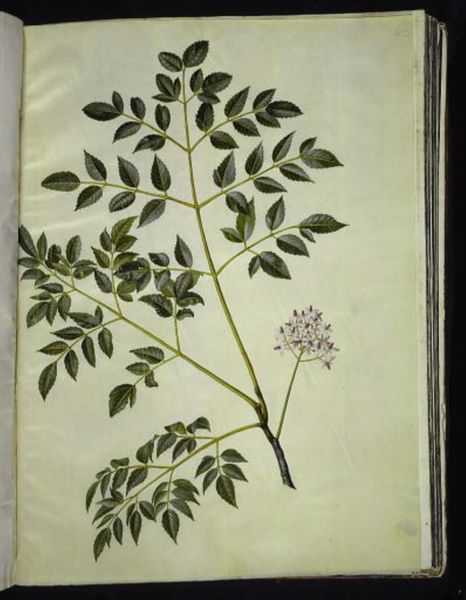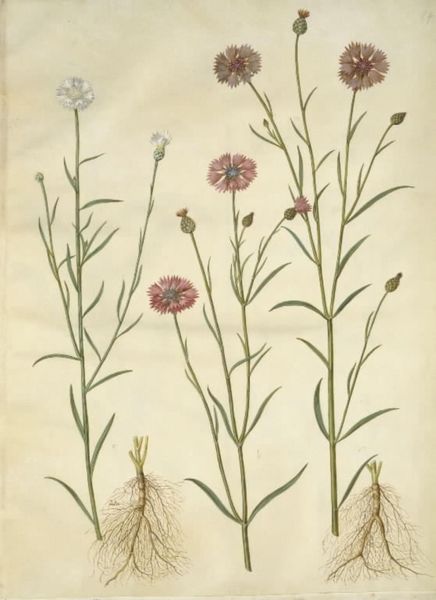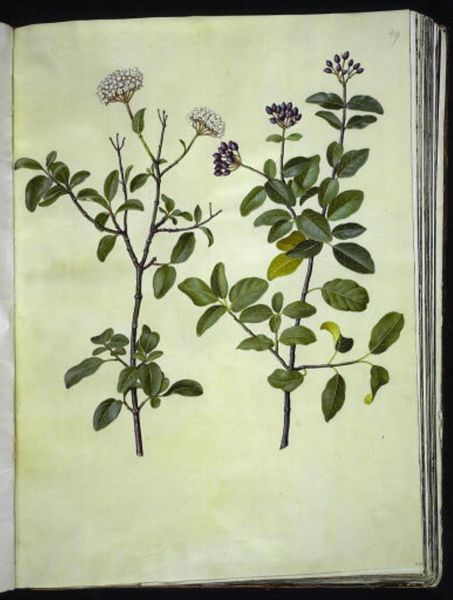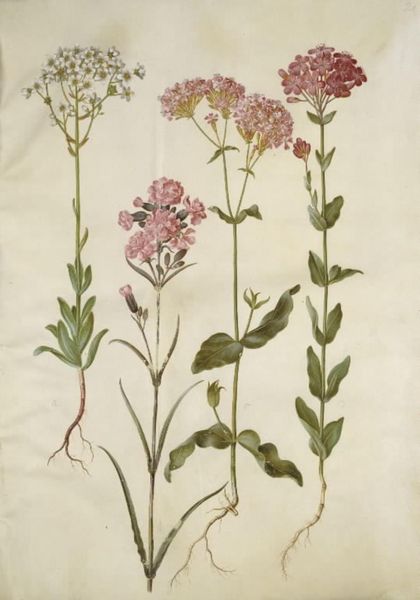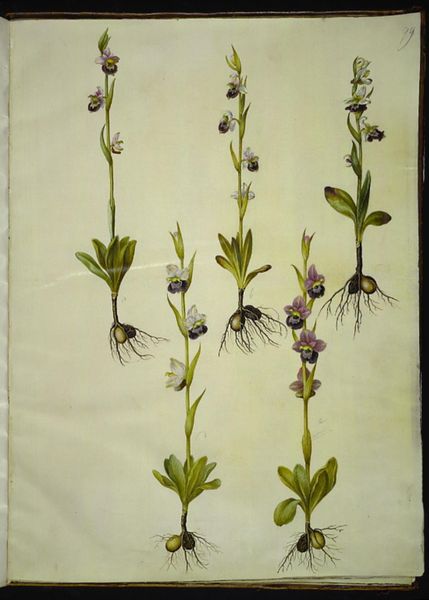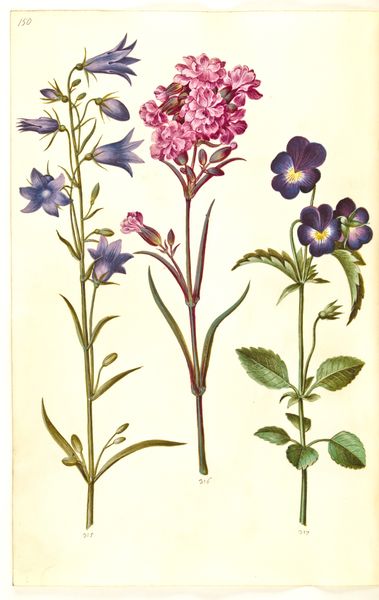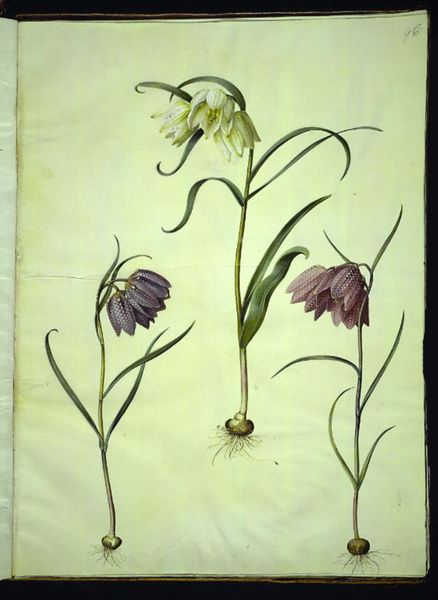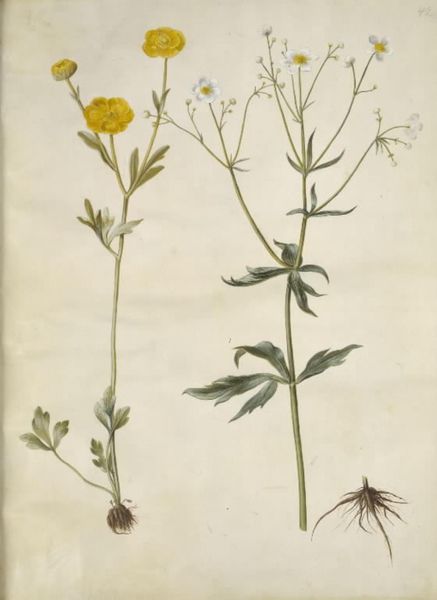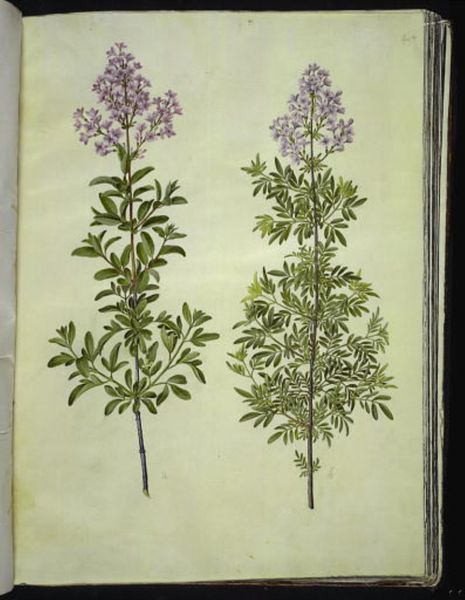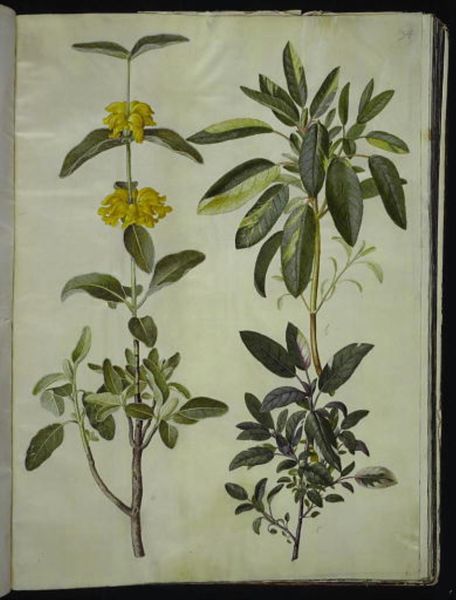
Asclepias incarnata (rosen-silkeplante) 1649 - 1659
0:00
0:00
drawing, coloured-pencil, gouache, paper
#
drawing
#
coloured-pencil
#
gouache
#
paper
#
coloured pencil
#
botanical art
#
realism
Dimensions: 505 mm (height) x 385 mm (width) (bladmaal)
Curator: So, we're looking at a beautiful botanical study today. It's "Asclepias incarnata," or rosen-silkeplante in Danish, by Hans Simon Holtzbecker. It was created sometime between 1649 and 1659. It’s done with colored pencil and gouache on paper and currently resides here at the SMK. Editor: The first thing that strikes me is the stillness. A gentle calm radiates from these two plants, it's as if Holtzbecker has captured a moment of perfect serenity in the garden. There’s a beautiful juxtaposition in the asymmetry, with the lively bunching of little mauve-pink flower heads offset against the structural seed pods on the right. Curator: Holtzbecker was clearly working within a tradition that prized scientific accuracy alongside aesthetic beauty. Remember, this was a period of intense botanical exploration and classification. The realism aligns it with other works that document and attempt to categorize the natural world. This resonates with current postcolonial critiques regarding taxonomy and control. Editor: Interesting! To me, the somewhat faded palette evokes old memories, something comforting. And yes, there’s undeniable accuracy in rendering but somehow there's tenderness too. The subtle nuances of green in the leaves, for example. Almost a meditation on growth and decay intertwined. Curator: The choice of Asclepias, or milkweed, might also be significant. Milkweed has complex symbolism often associated with resilience and endurance, traits that, considered within a period defined by religious conflict and consolidating power, hint to underlying currents of resistance. The decision to foreground this particular plant seems rather thoughtful. Editor: You know, I hadn’t considered it in that way at all, but the fact that the work can prompt such different perspectives, political and personal, just speaks to its richness. Curator: Absolutely. I think by appreciating the work's historical context, as well as allowing our subjective experience to come to the fore, we deepen our understanding of both the art and our place within these ongoing narratives. Editor: Well said. For me, it comes down to connection—to nature, to memory, to quiet observation—something truly valuable in a noisy world.
Comments
No comments
Be the first to comment and join the conversation on the ultimate creative platform.
